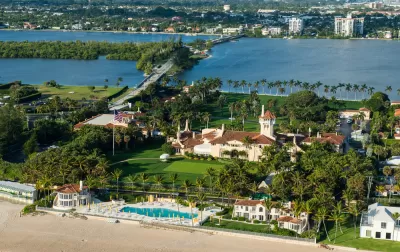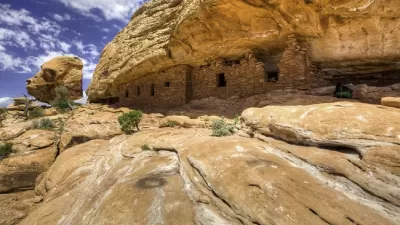After announcing the coast of almost all states would be open for oil and gas production, the Secretary of the Interior changed his mind on one after meeting with Trump’s favored candidate for Senate.

Reviewing a year of the Department of the Interior under Ryan Zinke, Elizabeth Kolbert notes that he is, "in many ways, a typical Trump appointee" in that "[n]early all Trump’s Cabinet members have shown disdain for the regulatory processes they’re charged with supervising."
Since he first rode into town and raised his flag over the agency, Zinke has reopened federal land for coal leases, recommended shrinking Bears Ears National Monument, expressed interest in making it easier to drill for oil and gas on public land, and rolled back regulation on methane.
Earlier this month, despite bipartisan opposition from both politicians and voters, Zinke announced he would open almost all of the coastal areas in the United States to offshore drilling.
Several days later, he took part of it back. After a brief meeting with Florida Governor Rick Scott, Zinke removed the state’s coast from consideration.
“The move was manifestly political. In the past, Scott has supported drilling for oil just about everywhere, including in the Everglades, but, with Trump’s encouragement, he is now expected to challenge Florida’s senior senator, Bill Nelson, a Democrat, in November.”
Even more recently, Zinke’s refusal to meet with the National Park Service Advisory Board prompted the resignation of nine of its 12 members.
"In the decades to come," Kolbert writes, "one can hope that many of the Trump Administration’s mistakes—on tax policy, say, or trade—will be rectified. But the destruction of the country’s last unspoiled places is a loss that can never be reversed."
FULL STORY: The Damage Done by Trump’s Department of the Interior

Study: Maui’s Plan to Convert Vacation Rentals to Long-Term Housing Could Cause Nearly $1 Billion Economic Loss
The plan would reduce visitor accommodation by 25,% resulting in 1,900 jobs lost.

North Texas Transit Leaders Tout Benefits of TOD for Growing Region
At a summit focused on transit-oriented development, policymakers discussed how North Texas’ expanded light rail system can serve as a tool for economic growth.

Why Should We Subsidize Public Transportation?
Many public transit agencies face financial stress due to rising costs, declining fare revenue, and declining subsidies. Transit advocates must provide a strong business case for increasing public transit funding.

How to Make US Trains Faster
Changes to boarding platforms and a switch to electric trains could improve U.S. passenger rail service without the added cost of high-speed rail.

Columbia’s Revitalized ‘Loop’ Is a Hub for Local Entrepreneurs
A focus on small businesses is helping a commercial corridor in Columbia, Missouri thrive.

Invasive Insect Threatens Minnesota’s Ash Forests
The Emerald Ash Borer is a rapidly spreading invasive pest threatening Minnesota’s ash trees, and homeowners are encouraged to plant diverse replacement species, avoid moving ash firewood, and monitor for signs of infestation.
Urban Design for Planners 1: Software Tools
This six-course series explores essential urban design concepts using open source software and equips planners with the tools they need to participate fully in the urban design process.
Planning for Universal Design
Learn the tools for implementing Universal Design in planning regulations.
City of Santa Clarita
Ascent Environmental
Institute for Housing and Urban Development Studies (IHS)
City of Grandview
Harvard GSD Executive Education
Toledo-Lucas County Plan Commissions
Salt Lake City
NYU Wagner Graduate School of Public Service




























